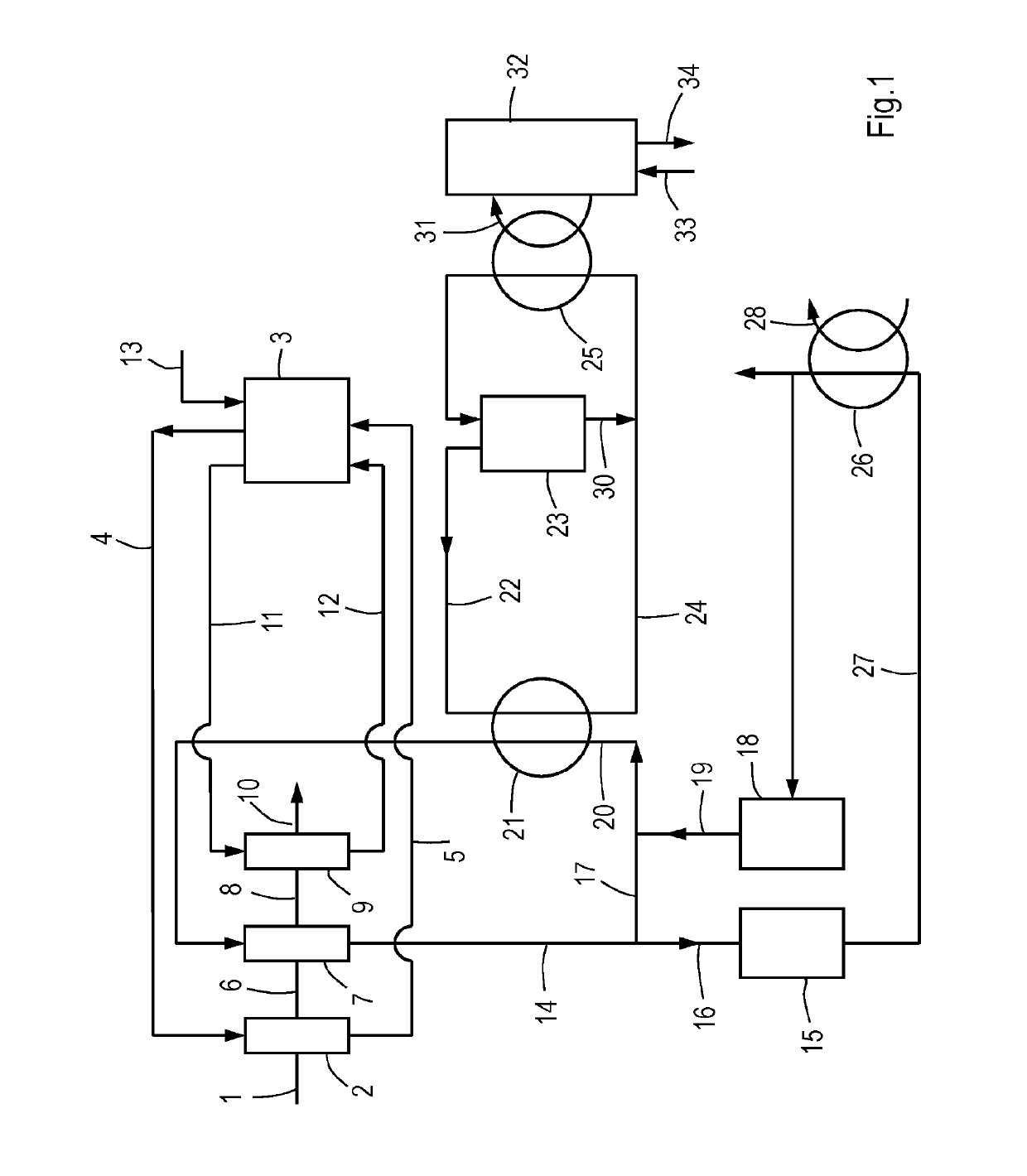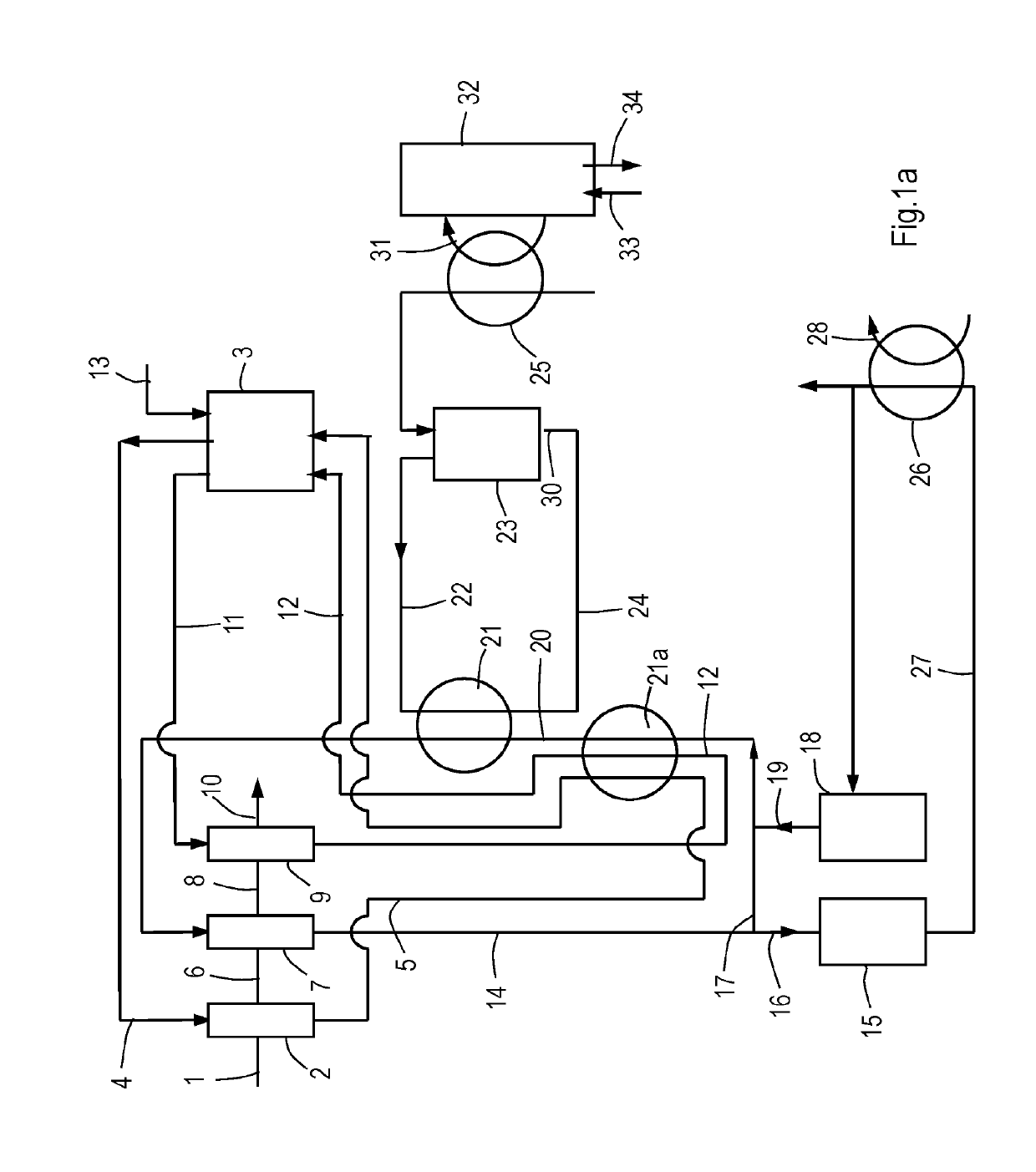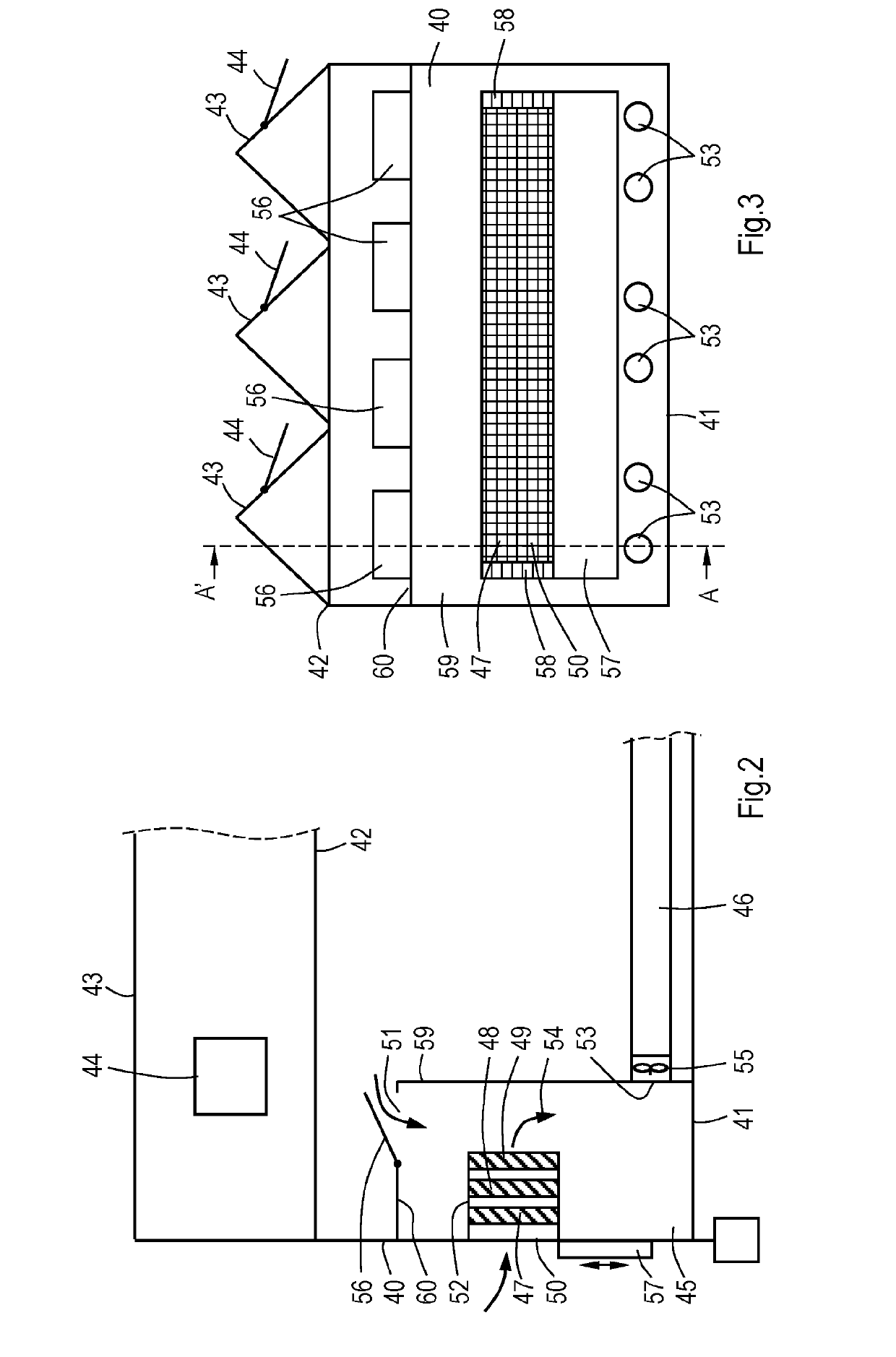Process to reduce the temperature of a feed of air and greenhouse
- Summary
- Abstract
- Description
- Claims
- Application Information
AI Technical Summary
Benefits of technology
Problems solved by technology
Method used
Image
Examples
Embodiment Construction
[0037]FIG. 1 is a flow diagram of how the process according to the invention may be performed. The flow diagram will be used to illustrate a possible operating point of the process. Via stream 1 air with a temperature of 36° C. and a saturation of 70% (having a dew point of 30° C.) is contacted with liquid water in first evaporating pad 2. To first evaporating pad 2 water is supplied from a water tank 3 via stream 4 and returned to tank 3 via stream 5. From evaporating pad 2 air is obtained in stream 6 having a temperature of 31.9° C. and a saturation of 92%. This air is subsequently contacted with a aqueous hygroscopic solution containing 90 wt % 1,2-propanediol in hygroscopic dehumidification pad 7. The air in stream 8 as discharged from the hygroscopic dehumidification pad 7 has a temperature of 33.9° C. and a saturation of 67%. This air is contacted with liquid water in second evaporating pad 9. The air as obtained in stream 10 has a temperature of 29.5° C. and a saturation of 9...
PUM
 Login to View More
Login to View More Abstract
Description
Claims
Application Information
 Login to View More
Login to View More - R&D
- Intellectual Property
- Life Sciences
- Materials
- Tech Scout
- Unparalleled Data Quality
- Higher Quality Content
- 60% Fewer Hallucinations
Browse by: Latest US Patents, China's latest patents, Technical Efficacy Thesaurus, Application Domain, Technology Topic, Popular Technical Reports.
© 2025 PatSnap. All rights reserved.Legal|Privacy policy|Modern Slavery Act Transparency Statement|Sitemap|About US| Contact US: help@patsnap.com



